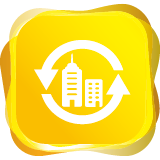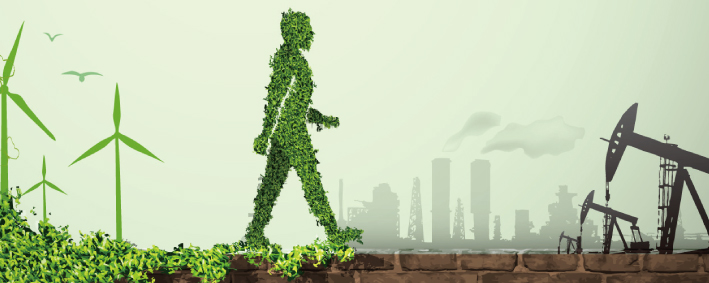 |
CCHU9001 Arts and Humanities
|
[This is a certified Communication-intensive (CI) Course which meets all of the requirements endorsed by HKU’s Senate, including (i) the teaching assessment of oral and digital communication ‘literacies’; and (ii) at least 40% of the course grade assigned to communication-rich assessment tasks.]
Course Description
‘Designs on the Future’ is intended to inspire thinking about the way we should construct our future living environments in order to find the most sustainable balance. We will explore the United Nation’s Sustainable Development Goals (SDGs) as they apply to Hong Kong, addressing issues of population and urbanization, materials resources, and human systems, as a way of understanding what is a sustainable future might look like. We will evaluate the different media and strategies that people have used / are using to advocate for more sustainable approaches to the environment and community.
Each week students are required to undertake up to one hour of online pre-class activities in preparation for mini-tutorials (30 mins online) and an interactive F2F class workshop sessions which involve a wide range of group activities and exercises. The pre-class components deliver the bulk of the course content, while the tutorials and workshop sessions help develop our understanding of sustainability issues, allow us to explore contexts and interconnections, and to apply the concepts to different scenarios. We will be using Curios virtual learning environment (https://curios.hku.hk/) throughout the course to work together online, present and evaluate our work.

Course Learning Outcomes
On completing the course, students will be able to:
- Demonstrate understanding of the built environment in relation to its physical and socio-cultural context, and to develop and articulate ideas about the relationship between human beings, the environment and how human experience are expressed in their constructions.
- Identify current issues relating to sustainable development and evaluate the extent to which these influence, and are influenced by, the landscape and built environment.
- Be able to evaluate the strategies adopted by people in making sustainability arguments, and to be able to develop an effective proposal for action on a local sustainability issue.
Offer Semester and Day of Teaching
First semester (Wed)
Study Load
| Activities | Number of hours |
| Online course material | 12 |
| Tutorials | 12 |
| Reading / Self-study | 36 |
| Workshop sessions | 20 |
| Assessment: Assignments | 48 |
| Total: | 128 |
Assessment: 100% coursework
| Assessment Tasks | Weighting |
| Individual reflective log book | 20 |
| Group project proposal | 30 |
| Infographic diagram | 20 |
| Elective item | 20 |
| Project presentation | 10 |
Required Reading
In addition to weekly course videos, students will be required to read selected passages from the following texts:
- ADM Capital Foundation and Civic Exchange. (2018). Illusion of Plenty: Hong Kong’s Water Security, Working Towards Regional Water Harmony.
- Burdett, R., Taylor, M., Kaasa, A., & Robazza, G. (2011). Hong Kong: cities, health and well-being.
- China’s Green Long March, UN Environment Programme. (2013).
- Frank, L. D., Appleyard, B. S., Ulmer, J. M., Chapman, J. E., & Fox, E. H. (2021). Comparing walkability methods: Creation of street smart walk score and efficacy of a code-based 3D walkability index. Journal of Transport & Health, 21, 101005.
- Gatti, L., Ulrich, M., & Seele, P. (2019). Education for sustainable development through business simulation games: An exploratory study of sustainability gamification and its effects on students’ learning outcomes. Journal of cleaner production, 207, 667-678.
- Role of Technology in Implementing and Monitoring the SDGs. The 6th Economic and Social Council Youth Forum.
- Sachs, J. D., Schmidt-Traub, G., Mazzucato, M., Messner, D., Nakicenovic, N., & Rockström, J. (2019). Six transformations to achieve the sustainable development goals. Nature sustainability, 2(9), 805-814.
- Singapore National Water Agency. (2022). Singapore Water Story.
- Solomon, J., Wong, C., & Frampton, A. (2012). Cities without ground: A Hong Kong guidebook. San Francisco: ORO Editions.
- UNESCO’s Atlas of underground water. (2008). New Scientist. [Commentary]
- WWF Eco-footprint HK. (2019).
Review these websites / documentary videos:
- Mercer’s Cost of Living Index
- Arcadis’ Sustainable Cities Index
- UN’s metrics for sustainability goals
- Hedley Environmental Index of Hong Kong
- Manufactured Landscapes. (2006).
- Samsara. (2011).
- The Hidden Costs of Hamburgers. (2012).
- The Power of Community: How Cuba Survived Peak Oil. (2006).
- The Social Life of Small Urban Spaces. (1980). From http://www.pps.org/product/the-social-life-of-small-urban-spaces/
- The story of stuff. (2007).
Course Co-ordinator and Teacher(s)
| Course Co-ordinator | Contact |
| Professor M.R. Pryor Department of Architecture, Faculty of Architecture |
Tel: 3917 7961 Email: matthew.pryor@hku.hk |
| Teacher(s) | Contact |
| Professor M.R. Pryor Department of Architecture, Faculty of Architecture |
Tel: 3917 7961 Email: matthew.pryor@hku.hk |

